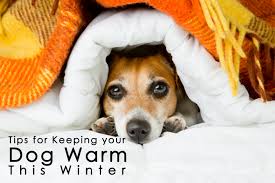Yes dogs can feel cold, especially in extreme temperatures or if they exposed to cold whether for an extended period. Dogs, like humans have a comfort zone when it comes to temperature, and if gets too cold, they can experience discomfort, stress and even hypothermia. factors that can affect a dog sensitivity to cold include.
Some breeds, such as Siberian huskies and Alaskan malamutes are bred to tolerate cold temperatures are bred to tolerate cold temperatures while others, like chihuahuas and greyhounds may be more sensitive to cold. Coat thickness and type dogs with thick double coats or long hair may be more insulated than lose with short or thin coats. Older dogs, puppies and dogs with certain health conditions may be more sensitive to cold temperatures.
Introduction
Dogs can feel cold their sensitivity to temperatures extremes varies based on their breed, coat type size ,age, health and acclimation. While dogs have adaptions to regulate their body temperatures they can still experience discomfort, stress, and even hypothermia in cold conditions. Its essential for dog owners to recognize the signs of cold stress in their pets, such as shivering, whining and seeking warmth and take appropriate measures to provide comfort and protection. This includes providing adequate shelter, bedding and clothing, as well as limiting exposures to extreme cold and monitoring their dogs behavior and health.
By understanding how dog respond to cold temperatures and taking necessary precaution, dog owner can help ensure their furry friends stay ,warm, comfortable, and safe during the chilly months. Remember dogs rely on their human caregivers to provide them with the care and protection they needs and take steps to meet them.
How does cold weather affect dogs?
Some dogs are more likely to feel the cold than others, with factors such as breed, coat type, size, weight, age, and health influencing their tolerance. does can feel the cold just as much as human do despite their fur coats. Breeds developed in the northern Hemisphere tend to be more cold-tolerant. Small dogs have a larger surface area to volume ratio making them lose heat faster. Dogs with more body fat have more insulation and can stay warm longer.
Can dogs get fever?
Dogs can develop fever, also known as pyrexia, which is defined as a body temperature higher than the normal range the typical body temperatures for a dog is between 99.5 and 102.5 degrees Fahrenheit(37.5 degree Celsius to 39.2 degrees Celsius) fever is defined as a body temperature between 103 and 106 degrees Fahrenheit. If the dogs temperature exceed 106 degrees Fahrenheit it can be serious or fatal in dogs.
Why do dogs overheat?
Exercise excitement, or infection can cause a dogs temperature to rise normally. But when a dogs body temperature rises only a few degree over 102 degree Fahrenheit a dog becomes over heated intense physically activity especially in hot weather, can cause dogs to overheat. High humidity can prevent dogs from cooling themselves efficiently through panting. Extreme the temperatures either hot or cold can lead to overheating.
How do dogs cool themselves?
Dogs pant to evaporate water from their tongue mouth, and respiratory tract which helps to cool their body temperature. Dogs dilate their blood vessels to increase blood flow to the skin allowing heat to be lost more efficiently. While dogs don’t sweat as much as humans they do have sweat glands to their paw pads and noses which help to cool them down. Dogs can lose heat through radiation especially frow their ears which are highly vascularized and exposed to the environment.
What are the signs of heatstroke in dogs?
Here are some possible signs of heatstroke in dogs heavy panting rapid and or difficulty breathing increased heart rate with a bounding pulse lethargy lack of coordination vomiting and diarrhea a deep red or purple colored tongue and gums seizure if your doges experiencing any of these symptoms especially excessive panting it may be suffering from heatstroke, and you should seek veterinary attention immediately.
What are the risks of heatstroke in dogs?
If a dog body temperature goes above it can cause permanent brain damage. If the body temperature exceeds it can cause sever organ damage. Heatstroke can be fatal if not treated promptly even if the dog recovers from heatstroke it may still have neurological deficits. Can cause multi-organ failure in dogs heatstroke can cause seizures in dogs with heatstroke’s may fall in to a coma. Can cause vomiting and diarrhea in dogs which can lead to dehydration.
How do you treat heatstroke in dogs?
Heatstroke can cause serious complications in dogs including dehydration, shock, organ failure and even death the dog from the hot area immediately wet the dog thoroughly with cool not very cold water increase air movement around him with a fan lower the dogs body temperature to a safe range and monitor his temperature provide access to water or a children rehydrating solution if the dog can drink on his own.
Conclusion
In conclusion dogs can feel cold and their sensitivity to temperature extremes varies based on their bred coat type size age health and acclimation. While dogs have adaptions to regulate their body temperature they can still experience discomfort, stress, and even hypothermia in cold conditions. It essential for dogs owner to recognize the signs of cold stress in their pets such as shivering whining and seeking warmth and take appropriate measures to provide comfort and protection.
This includes providing adequate shelter bedding and clothing as well as limiting exposure to extreme cold and monitoring their dogs behavior and health by understanding how dogs respond to cold temperatures and taking necessary precaution dog owners can help ensure their furry friends stay warm comfortable, and safe during the chilly. months remember dog rely on their human caregivers to provide them with the care and protection they need so it crucial to be aware of their needs and take steps to meet them.
By being mindful of your dogs comfort level in cold weather you can help prevent potential health issues and ensure your dog remains happy, healthy, and cozy throughout the year.